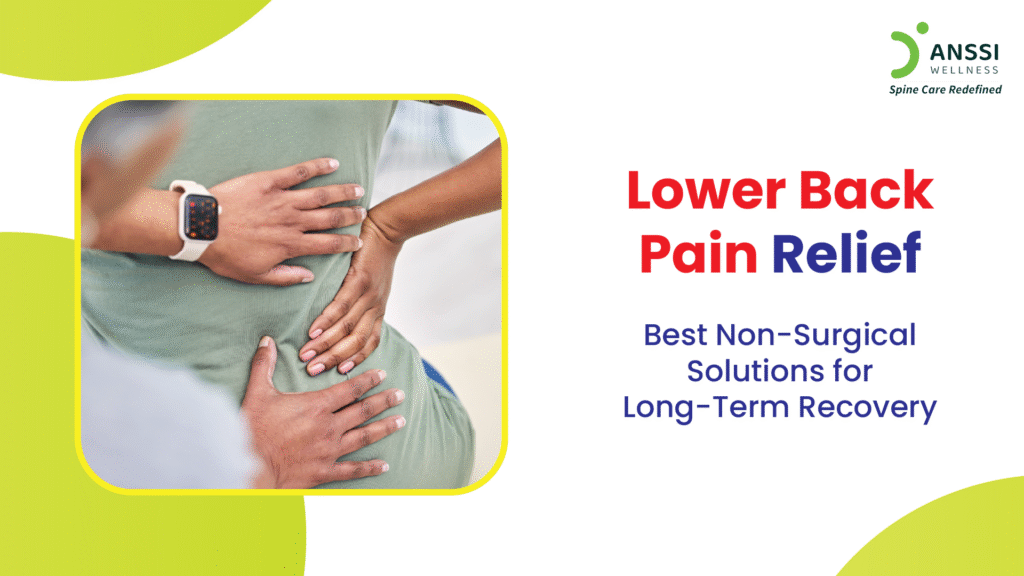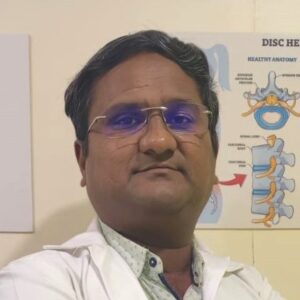Lower back pain is one of the most common health complaints across all age groups, affecting millions globally. Whether it’s due to poor posture, sedentary habits, or spinal degeneration, the discomfort can significantly impact your quality of life. While surgery might seem like a quick fix, many patients are now turning toward non-surgical alternatives that are not only effective but also safer and sustainable in the long run.
Let’s explore the root causes of lower back pain and discuss proven non-surgical strategies such as lifestyle changes, physiotherapy, and non-surgical spinal decompression treatment that provide lasting relief and promote spinal health.
Understanding the Root Causes of Lower Back Pain
To treat lower back pain effectively, it’s important to first understand what’s causing it. Some of the most common causes include:
Muscle or ligament strain from lifting heavy objects improperly, or sudden, awkward movements
- Poor posture, especially from long hours of sitting or screen use
- Degenerative disc disease or age-related wear and tear
- Herniated or bulging discs that press on spinal nerves
- Spinal stenosis, a narrowing of the spinal canal
Knowing the source of the pain helps in creating a tailored treatment plan that avoids surgery and addresses the root problem.
Lifestyle Modifications for Lasting Relief
Small daily changes can go a long way in preventing and reducing lower back pain.
These include:
- Correcting posture: Make a conscious effort to sit with a straight spine, shoulders relaxed, and feet flat on the ground. Use chairs with lumbar support and take regular breaks to stand or stretch.
- Setting up an ergonomic workspace: Ensure your computer monitor is at eye level, your desk and chair height encourage proper alignment, and your keyboard and mouse are within easy reach.
- Staying active: Avoid long periods of inactivity. Walking for even 15-20 minutes a day can help reduce stiffness and improve circulation to the lower back.
- Maintaining a healthy weight: Excess body weight puts added pressure on the spine and can exacerbate lower back pain. Eating a balanced diet and exercising regularly can help manage weight and reduce spinal stress.
Physiotherapy and Exercise: Building Strength and Mobility
Physiotherapy is a cornerstone of non-surgical back pain relief. A trained physiotherapist will assess your condition and develop a personalised exercise plan to target your specific pain points.
Here’s how physiotherapy can help:
- Strengthening exercises: Focus on the core, glutes, and back muscles to support the spine and reduce pressure on injured areas.
- Stretching routines: Gentle stretches improve flexibility and range of motion in the lower back and hips, helping reduce muscle tightness.
- Postural training: Helps correct body mechanics during daily activities like bending, lifting, and sitting.
- Manual therapy: Includes techniques such as myofascial release and joint mobilisation to reduce pain and stiffness.
Sticking to a regular exercise routine under the guidance of a physiotherapist can significantly improve long-term outcomes and reduce the risk of recurrence.
Non-Surgical Treatments: Spinal Decompression and More
When conventional treatments don’t bring sufficient relief, advanced non-surgical treatments can offer significant improvement. One such treatment is Non-Surgical Spinal Decompression Treatment.
What is Non-Surgical Spinal Decompression Treatment?
Non-surgical spinal decompression is a non-invasive, traction-based treatment that gently stretches the spine to:
- Relieve pressure on compressed nerves or discs
- Improve spinal alignment
- Enhance nutrient flow to damaged areas to support healing
This treatment is especially beneficial for patients with conditions like herniated discs, sciatica, and degenerative disc disease. Unlike surgery, it does not involve any cuts, injections, or medication.
Other Helpful Non-Surgical Treatments:
- Chiropractic adjustments: Can help restore spinal alignment and relieve nerve pressure
- Massage therapy: Loosens tight muscles and improves blood circulation
- Heat and cold therapy: Reduces inflammation and eases pain when applied correctly
- TENS therapy (Transcutaneous Electrical Nerve Stimulation): Uses low-voltage electrical current to relieve pain
These treatments can be used alone or in combination, depending on the severity of the condition and the individual’s response.
The Importance of Early Intervention
One of the biggest mistakes people make is ignoring back pain until it becomes unbearable. Addressing symptoms early, before they become chronic or debilitating, can make a significant difference in recovery time and overall well-being.
If you’re experiencing any of the following, it’s time to seek professional guidance:
- Pain that lasts more than a few weeks
- Numbness, tingling, or weakness in the legs
- Pain that worsens with activity or rest
- Difficulty standing, walking, or sleeping due to pain
Consulting a spine care specialist can help you understand your condition better and choose the most appropriate non-surgical treatment plan.
About ANSSI:
ANSSI Wellness focuses on improving the quality of life for patients suffering from spinal issues, aiming to provide relief where other conventional treatments have failed. Through advanced non-surgical spinal decompression treatment, ANSSI is committed to helping patients avoid surgery and recover in a safe, effective, and compassionate environment.
Connect with ANSSI Wellness on LinkedIn, Instagram, and Facebook for expert guidance.




